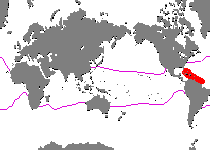
 www.frogfish.ch
www.frogfish.ch

|
Eastern
Atlantic If not from the areas above |
Identification Key Frogfishes
Western Atlantic (incl. the Caribbean)
![]()
All frogfish species listed here are living in the Western Atlantic
and are not striped.
For striped frogfishes living in the Western
Atlantic click here.
For a overwiew of all frogfishes from this area click here.
![]()
If you are in the Western Atlantic and you find a frogfish which is larger than 12cm it has to be Fowlerichthys ocellatus, which is the largest frogfish here.
In the Western Atlantic there are two frogfishes that look very similar - Antennarius multiocellatus and Fowlerichthys ocellatus. The body of Antennarius multiocellatus is covered with ocelli (eye spots), Fowlerichthys ocellatus has only 3 large black ocelli, encircled by a lightly pigmented ring.
Antennarius multiocellatus (Longlure frogfish)
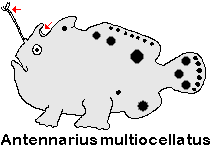 |
Information11cm |
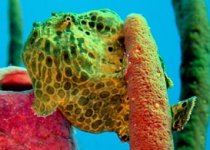 |
|
|
|||
Fowlerichthys ocellatus (Ocellated frogfish)
 |
Information38cm |
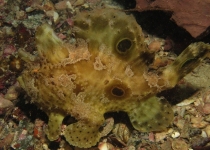 |
|
|
|||
![]()
If the lure is not visible or distinguishable it is nearly impossible to differ Abantennarius nummifer from Abantennarius bermudensis . The two frogfish species are very similar in color and basecally differ in that the second dorsal spine of Abantennarius bermudensis is bent backwards and the luring apparatus has several slender filaments and dark swellings ar the base.
Abantennarius bermudensis (Island frogfish) - Antennarius bermudensis
 |
Information6cm |
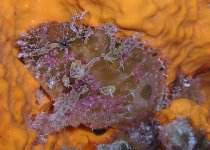 |
|
|
|||
Abantennarius nummifer (Spotfin frogfish)
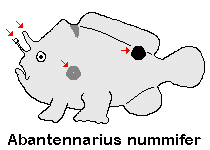 |
Information10cm |
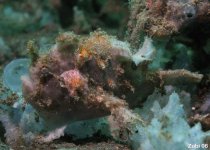 |
|
|
|||
These frogfishes are uncommon in the Western Atlantic:
Antennarius pauciradiatus has a membrane connecting the second and third dorsal spine.
Antennarius pauciradiatus (Dwarf frogfish)
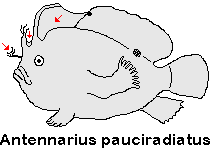 |
Information1.5-5cm |
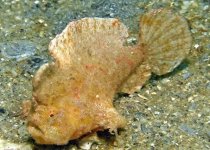 |
|
|
|||
Fowlerichthys radiosus (Big-Eyed frogfish)
 |
Information11cm |
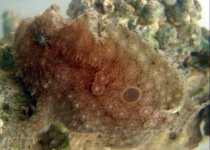 |
|
|
|||
![]()
This identification key is only for species of the subfamily Antennariinae (frogfishes, family Antennariidae, suborder Antennarioidei) which are frogfishes living in tropical and Subtropical waters.
Please take note, that this is a simplified identification key. Ichthyologists use tables with the number of dorsal, anal and pectoral rays, the length of the illicium and other distinguishing characteristics for means of identification.




